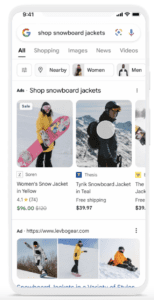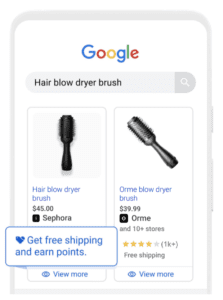Google is as big and influential as ever. But one of the downsides of being big and influential is that Google must fight battles on multiple fronts. We recently blogged about Google’s latest moves to combat the threat of TikTok. At Google’s recently conducted Marketing Live event, the company also took aim at Amazon.
Google versus Amazon
Google practically invented search. Google Search remains the engine that drives Google’s multi-billion dollar advertising business. When people use Google to search billions of times a day, advertisers want to appear alongside their search results. But, in recent years, Amazon has emerged as a powerful search engine all its own, especially for when people are searching for things to buy. Most product searches begin on Amazon, not Google. This is a problem for Google. When people search on Amazon, they search with intent to buy. And they’re not shopping as much on Google. Oh, and Amazon is building off that search activity to grow (impressively) the third largest online advertising business.
Google has been trying to change all that.
At Marketing Live, Google announced a number of developments intended to make Google a more attractive destination for shoppers. To wit:
- Swipeable shopping ads in search. A new ad display pairs organic shopping results with shopping ads, which makes online shopping more visual. The new swipeable shopping feed is available for apparel brands via Search or Performance Max campaigns. These will be clearly labeled as ads and will be eligible to appear in dedicated ad slots throughout the page. This ad type is coming later in 2022.
- Product feeds for a shoppable YouTube experience. Also at some point in 2022, advertisers will have the ability to connect product feeds to campaigns in order to create shoppable video ads on YouTube Shorts. With YouTube Shorts, people can quickly and easily create short videos of up to 15 seconds, similar to how TikTok and Instagram Reels are used. Shoppable video ads on Shorts helps Google capitalize on social shopping.
- 3D models of products in Google Search: merchants will be able to have 3D models of their products appear directly on Google Search, allowing shoppers to easily see them in their spaces. In launching this feature, Google said that more than 90 percent of Americans currently use, or would consider using, augmented reality for shopping.
- Promoting loyalty benefits. In the coming months, merchants will be able to promote their loyalty benefits to potential customers in the U.S. when they’re shopping across Google. Loyalty programs encourage repeat purchase. Google believes that integrating them into Google Ads will benefit retailers. According to Google, using Performance Max campaigns— along with a product feed — businesses will be able to drive more online loyalty sign-ups across YouTube, Display, Search, Discover, Gmail, and Maps.
These developments represent the latest wave of changes taking aim at Amazon. Another occurred in the third quarter of 2021 (more about that here). Google’s strategy is to capitalize on its reach. As popular as Amazon is, Google can rely on more touchpoints for advertisers to connect with consumers, ranging from YouTube to Gmail.
Google’s advertising business overall remains very strong although YouTube has been underperforming against analysts’ expectations. One of the reasons Google has grown so well is that the company does not rest on its laurels. The announcements from Marketing Live are evidence of that.
Contact True Interactive
All these developments are exciting, but It can be a challenge for advertisers to sort through the ever-evolving landscape. True Interactive works with businesses all the time to succeed with digital advertising, and that includes advertising in the Google universe. To succeed with online advertising, contact True Interactive. Read about some of our client work here.
Photo by John Schnobrich on Unsplash


